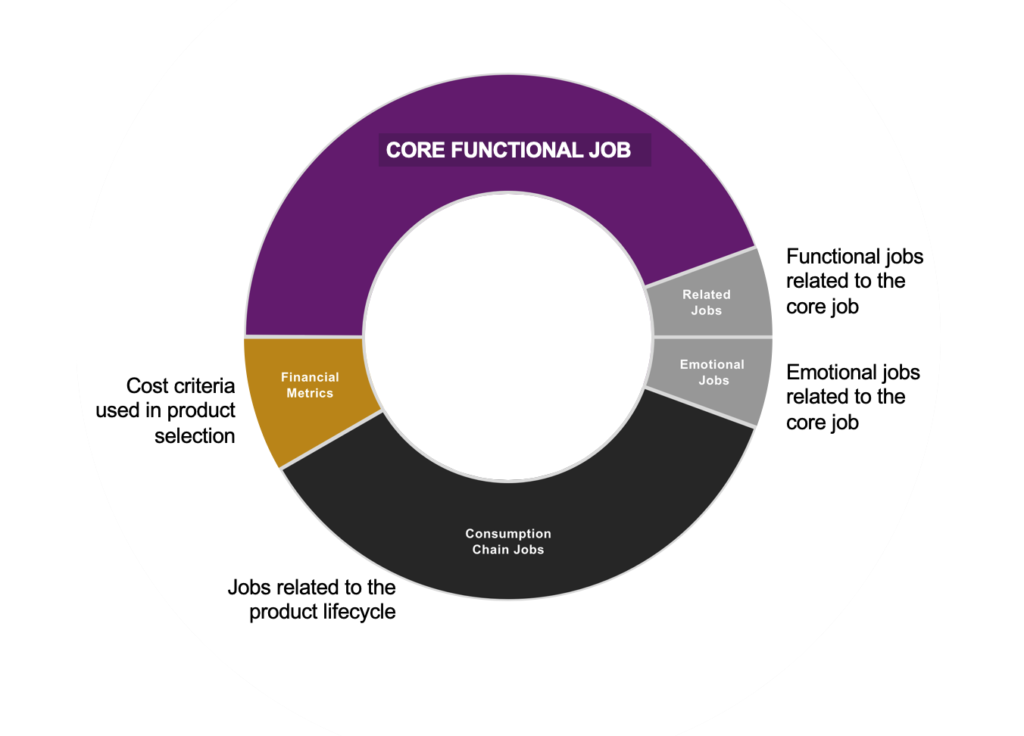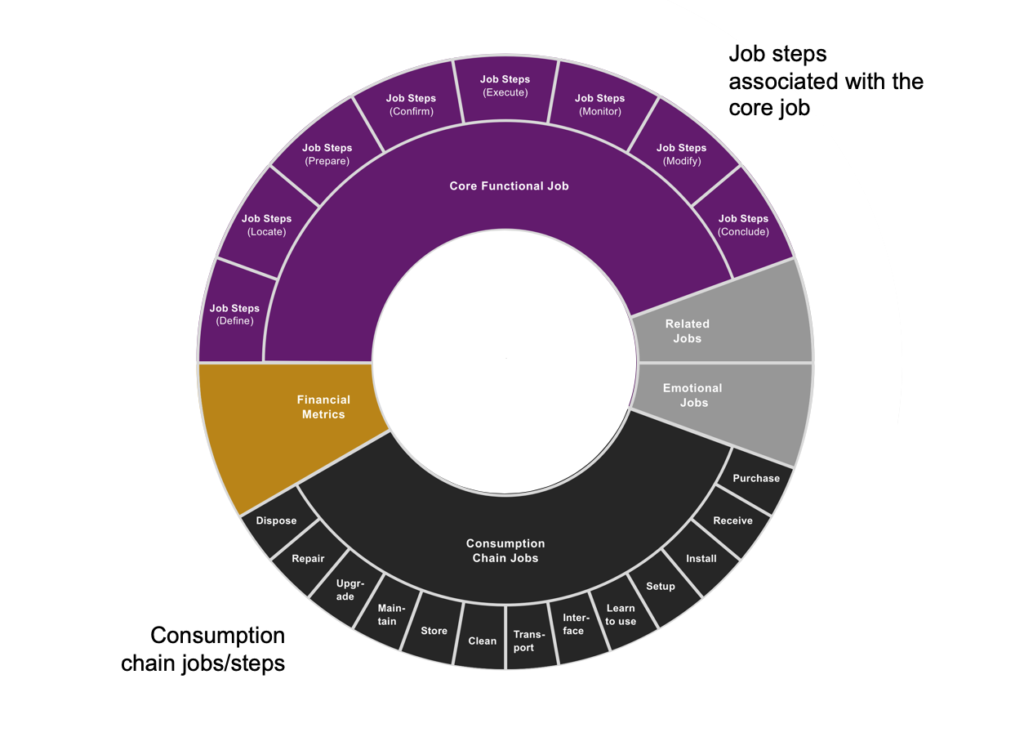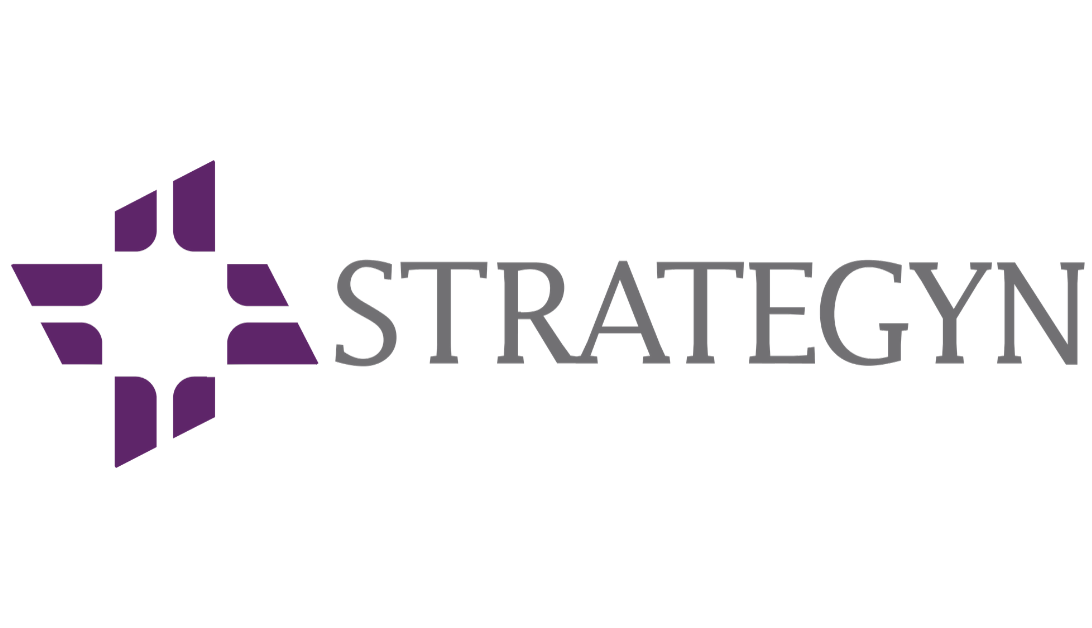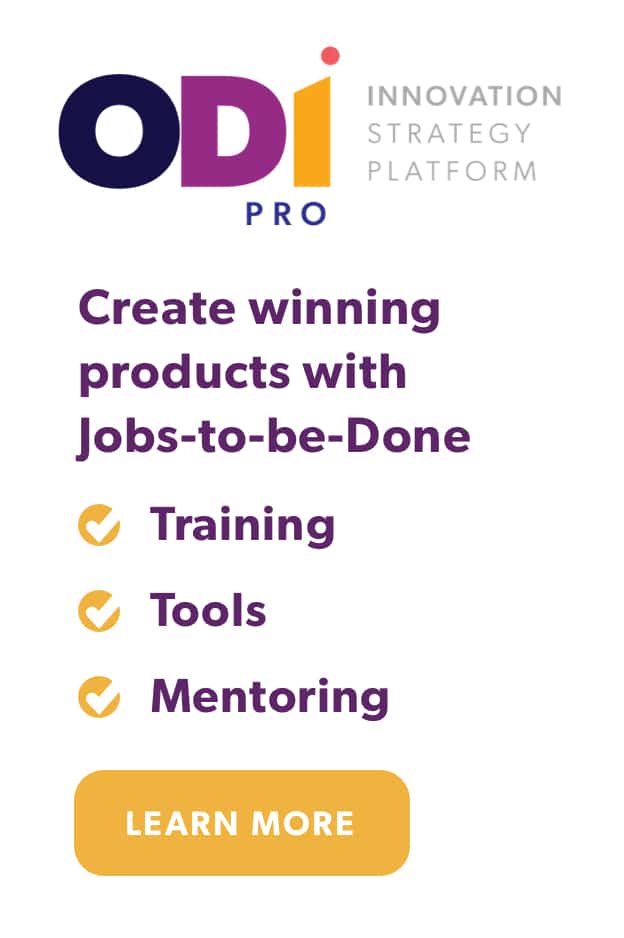I hate to break it to you (again), but you are probably not a born innovator like Edison, Jobs or Ford. They’re exceedingly rare.
Fortunately, that doesn’t mean you can’t think like one. It’s a choice. A lens you can choose to put on. This innovation lens is based on the Jobs-to-be-Done theory and understanding the 5 types of jobs customers are trying to complete when they use your product or service (check out my last post for details: How to See the World Like a Born Innovator). The more of these jobs your solution can help a customer get done, the more valuable it will be.

But you can’t stop there. Once you understand these jobs, this innovation lens also helps you dig a level deeper.
Understanding the Job Steps
If you want to create the innovative solutions that are most likely to win in the marketplace, you also need to understand the steps the customer will go through to complete the job. This means analyzing the core job and consumption chain jobs in more detail for a more granular look at what the customer is trying to accomplish.

Core Job Steps
To get a core job done, a customer has to define what they’re trying to do, gather the right inputs, organize them, execute on the job, evaluate the results, etc.
For example, making a cup of coffee with a traditional coffee maker requires that you insert a coffee filter, measure the grounds, put them into the machine, brew the coffee, determine if they made a good cup of coffee, etc. These are all job steps required to complete the core job of preparing a hot beverage for consumption. The Keurig and its K-cups help the user complete numerous job steps in this process much more quickly and easily.
If you are a finish carpenter and your job is to cut wood in a straight line, some of your job steps may be to define the goal of the cut, determine the cut path, make the cut, monitor deviations from the cut path, correct deviations from the cut path, etc. Bosch addressed several of these job steps by designing a cutout in their saw tables that helped users to keep their cuts on track throughout the process.
Consumption Chain Job Steps
The customer also has to purchase a product, receive it, set it up, learn to use it, clean it, store it, maintain it, etc. These are consumption chain job steps.
The Keurig coffee machine makes it easier to complete several of these job steps, such as cleaning the machine. With a traditional coffee maker, you must remove the filter and grounds and clean the pot after each use. There is no pot to clean on a Keurig, and the K-cups make it easier to remove the grounds.
Back to cutting wood, Bosch used this innovation lens to discover that many carpenters were accidentally cutting the cords on their saws while using them. One of their consumption chain job steps was therefore focused on cord repair. Bosch created the Direct Connect™ cord system that connects an extension cord directly to the saw. This system reduced repair costs and down time because if the cord gets cut, the user can simply grab another extension cord and continue working.
Breaking the core job and the consumption chain jobs down into job steps allows you to have a more granular look at what the customer is trying to achieve each step of the way. This presents you with more and clearer opportunities for product and service innovations—so you can stand out like the Edison or Jobs of your industry.
Next up, I’ll explain the third and final component to this new lens on innovation: understanding the customer’s desired outcomes.




